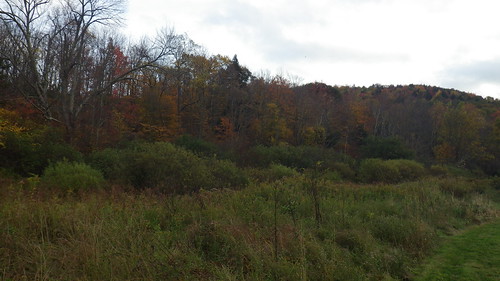Now that we're officially on winter break in San Diego (it's currently a wintry 81 degrees at UCSD), it seems like a good time to deal with the backlog of things I've wanted to write about here but, for whatever reason, I haven't. First among these is the 2014 ASOR Annual Meeting, which was, conveniently, in San Diego this year. Generally, a good time was had by all, and it was good to be able to speak face-to-face with some long distance collaborators and to get to see some good friends working with the Central Timna Valley Project again.
It was nice being on home turf, so to speak, and this was probably the least expensive conference experience I've ever had. Being in San Diego also meant a reception at CISA3 at the Qualcomm Institute at Calit2 at UCSD, which I think covers all of the names I'm meant to include now. I can't speak for everyone, but having been to a few Calit2 receptions in the past, this seemed like a pretty successful one. As is typical of these events — for reasons I don't totally understand — rather than simply enjoy the reception, I also presented briefly on some ceramic research I did over the summer, more on which soon. Given that this was an ASOR reception, there were a few people who were interested in that project, but as is usual for these events, other Calit2 projects tend to draw a bigger crowd. I can, of course, still claim that my research rarely causes motion sickness, so that's a plus.
My talk at ASOR was in a session with several site reports focused on the Iron Age, which, as I pointed out then, was sort of a weird fit, as I was neither giving a site report nor talking about the Iron Age, but the turnout was good, and the other talks were interesting. Following tradition, although it's a bit late, here's my abstract:
This is something of a side project, but it's an interesting one, as people have made quite a few claims about what happened during the 6th-8th centuries in Faynan on the basis of very little evidence. Now that we have slightly more, it's possibly to say a little bit more and show that some of those earlier claims are untenable (although, to be fair, some of them were untenable even based on the evidence that was available when they were proposed). This is slowly coming together into a publication, and I'll likely be posting about it again soon.As for next year — assuming I don't go to MESA or the AAAs instead — I already have a title in mind.Settlement and Economy in Faynan (Southern Jordan) at the Byzantine-Islamic Transition
Ian W. N. Jones, Mohammad Najjar, Thomas E. Levy
It is now established consensus among scholars working in the southern Levant that the Islamic Conquest does not mark a sharp break in settlement or economy, but rather that the 7th century AD is in fact a period of surprising continuity. Despite this, the status of much of southern Jordan during this transitional period remains unclear, due to incomplete ceramic typologies for the Islamic periods and disagreement over the nature of settlement in the late 6th century. However, continuing excavation in the region has begun to address both of these issues, especially the difficulty of identifying 7th century ceramic assemblages.Discussing the 7th century in Faynan has until now been especially difficult. In addition to the issues affecting most of southern Jordan, researchers have also faced a paucity of excavated material spanning the Late Antique-Early Islamic “transition.” This paper presents an updated view of the 7th century in Faynan based on analysis of 6th-8th century material from the UC San Diego Edom Lowlands Regional Archaeology Project excavations at Khirbat Faynan and Khirbat Hamra Ifdan, as well as reanalysis of material from intensive surveys of the region.While Faynan changed substantially between the Late Roman and Early Islamic periods, the key transition — the demise of the state-controlled copper industry — seems to have occurred in the late 4th or 5th century. The 7th century was, as in much of the southern Levant, not a period of disruption, but rather shows continuity of patterns that emerged in the 6th century or earlier.


